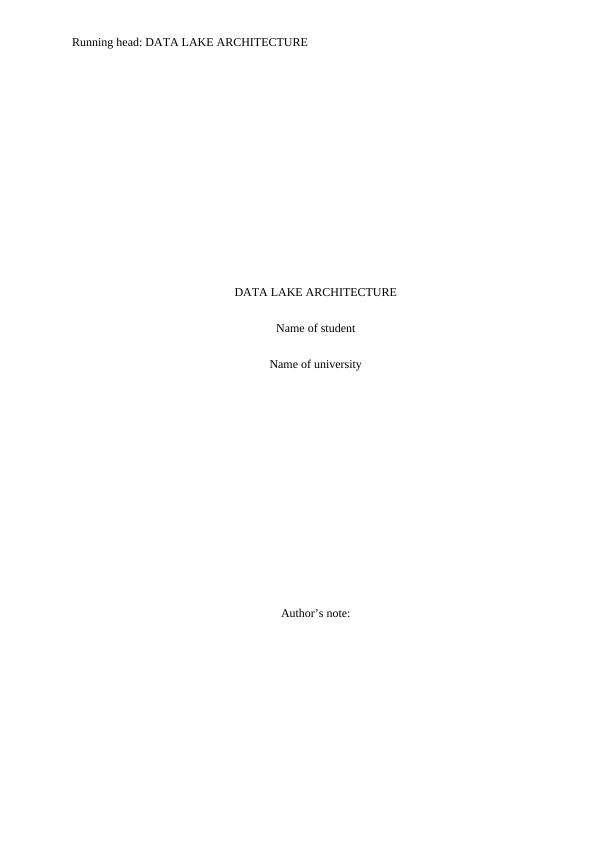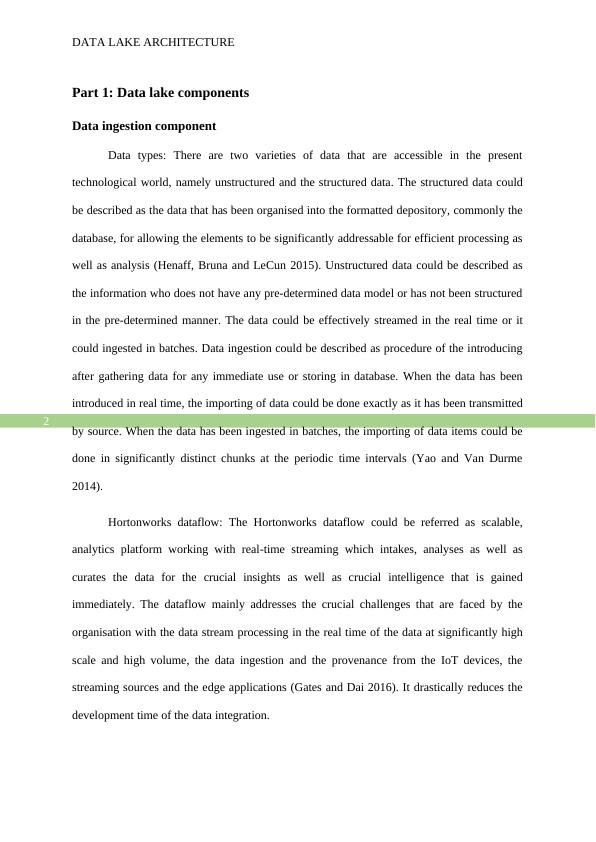Data Lake Architecture: Components and Architecture
Explore the management of big data using Data Lake technology and provide a Design Patterns for organizing a collection of datasets.
10 Pages2134 Words172 Views
Added on 2022-10-01
About This Document
This article discusses the components and architecture of data lake, including data ingestion, organisation, security and governance, indexing and search, analytics, and visualisation. It also proposes a data lake architecture for efficient operation.
Data Lake Architecture: Components and Architecture
Explore the management of big data using Data Lake technology and provide a Design Patterns for organizing a collection of datasets.
Added on 2022-10-01
ShareRelated Documents
End of preview
Want to access all the pages? Upload your documents or become a member.
Business Intelligence Using Big Data
|16
|4212
|71



